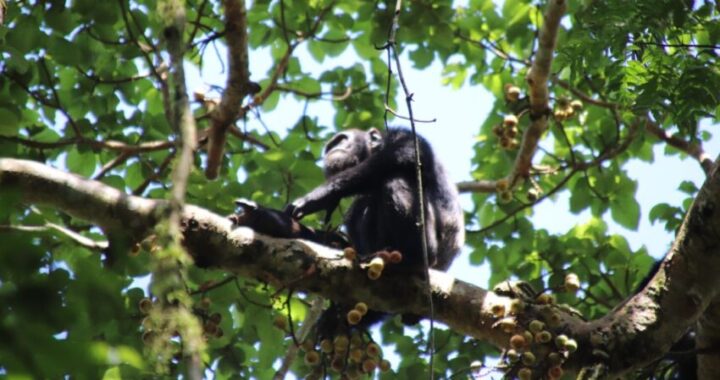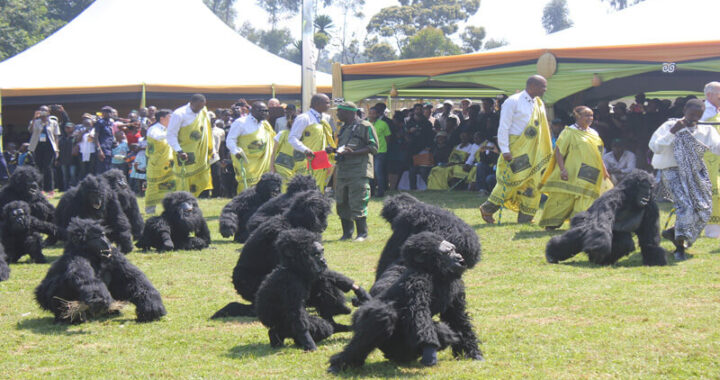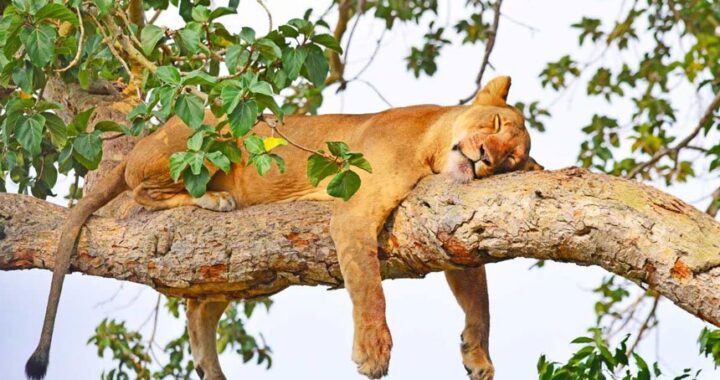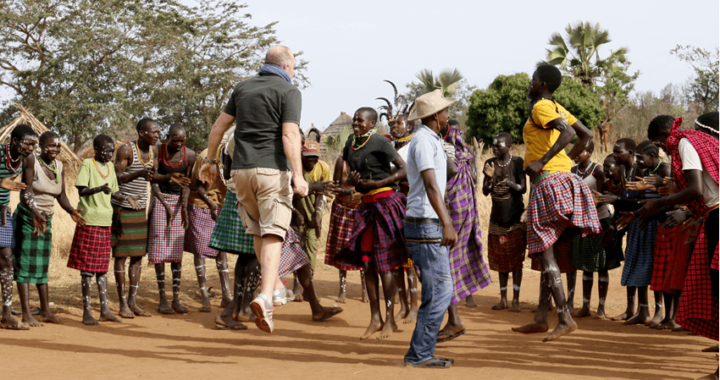Tracking chimpanzees in Kalinzu forest has proved very interesting. The nearby community has benefited from the growing number of tourists that buy handicrafts from them. Kalinzu Forest was gazetted as a central forest reserve in 1932 at the time covering an area of 461 sq.km. The reserve is located in Bushenyi district in the southern part of Queen Elizabeth national park in western Uganda.
Queen Elizabeth Conservation Area forms part of the western arm of the East African Rift Valley and Kalinzu forest stands at the edge of the escarpment overlooking Lake Edward, which is a Ramsar site. With an altitude ranging from 1,200 to 1,500 meters above sea level and rich volcanic soils, Kalinzu was desirable for tea growing.
A huge part was cleared and the Igara and Kyamuhunga tea plantations established in 1954. Eventually, the area of Kalinzu forest was reduced to 137 sq. km, which was officially demarcated in 1966 under the forest department. Any further deforestation was limited allowing the forest to regenerate and sustain the wildlife including a population of over 200 eastern chimpanzees. Kalinzu forest is one of the best places to visit for chimpanzee tracking experience in Uganda.
The forest is managed by the National Forestry Authority (NFA) in partnership with the Uganda Wildlife Authority (UWA). Both have managed to develop tourism including establishing a visitor center and Kalinzu forest campsite and a wide range of activities. These include nature walks for hiking to explore the flora and fauna in Kalinzu central forest reserve. The forest has over 378 bird species, 268 butterfly species, reptiles such as African rock python, and 6 primate species such as blue monkeys and black and colobus monkeys.
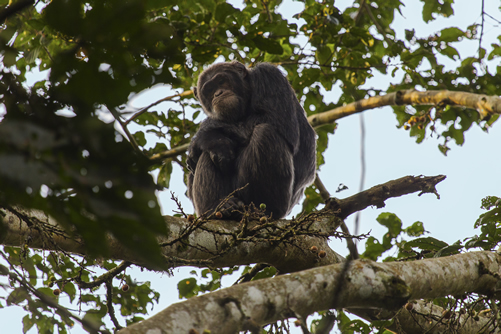
Chimpanzee tracking is the main activity and the level of hiking in search for chimps in Kalinzu is moderate due to the gentle nature of terrain. The average altitude of Kalinzu forest is 1,400 meters above sea level. A community of over 50 chimpanzees may be under habituation and the chance of spotting wild chimpanzees in Kalinzu forest is high. The Kalinzu chimp permit cost is $60 per person available for booking through a tour operator, making for a cost-effective option to Kibale forest national park.
Nkombe visitor Centre & Kalinzu Forest Campsite
Both sites are situated in the northeastern part of Kalinzu forest reserve. There are staff and rangers to give you information and make sure that your experience is fun and safe. Permission to access the forest must be obtained from them. The Nkombe forest center in particular facilitates research and conservation education activities for students and visitors alike. The Kalinzu forest campsite offers outdoor camping ground with pit and flush toilet and bathroom facilities. No electricity available so you can boil water for hot showers and prepare meals using open firewood or your own cooking appliances. Those intending to spend a night there are required to set up their own camping either on ground or a tent on top of a vehicle or track. Kalinzu forest is an ideal backpacking Uganda safari destination.
Those planning a quick trip there, the closest lodging options to Kalinzu are in Queen Elizabeth National Park or Bushenyi Municipality. Although Kalinzu is just 28 kilometers from Bushenyi, there aren’t as many places to stay in the town. Staying within the park is preferable to plan half-day excursions from any location within Queen Elizabeth National Park. For instance, Kalinzu Forest is located 60 kilometers from Lake Katwe, 32 km from Kazinga Channel, and 44 km south of Mweya Visitor Center.
Vegetation of Kalinzu forest
Kalinzu covers 137 sq.km and is a dense moist evergreen tropical forest with 414 tree species of trees including Musanga leo-errerae, whose fruits are an important food source for the chimpanzees. The forest is divided into four vegetation types including primary, secondary, and mixed forest.
A relatively larger part of Kalinzu is considered primary, where there’s no trace of human disturbance. However, much of the northeastern parts of the reserve contains secondary habitat meaning that it was previously disturbed by logging activities that took place in the 1970s. The Guinea plum tree (Parinari excelsa) was the most selectively harvested for its hardwood timber. Before the forest was declared a protected reserve, the locals also used to harvest trees for medicinal purposes such as Funtumia africana and Carapa grandiflora (Uganda crabwood) used in treating a number of ailments such as fire burns.
The most common tree species in the secondary growth forest in Kalinzu include broadleaf trees such as Musanga, guinea plum, Strombosia scheffleri, and Beilschmiedia ugandensis (Tylostemon ugandensis) that can grow up to 27-30 meters tall. The understory is characterized by small trees and evergreen shrubs such as wild cardamom (Aframomum angustifolium), a species in the wild ginger family Zingiberaceae. There are also Craterispermum laurinum (poir benth plant) which grows up to 7 meters. Kalinzu is surrounded to the north by savanna and so there’s vegetation transition between secondary and primary habitat.
Attractions in Kalinzu forest
Given that the forest is adjacent to the savanna grasslands and wetlands around Lake George in Queen Elizabeth national park, it is an important habitat for forest dwelling birds and primates, the main attractions.
Primates
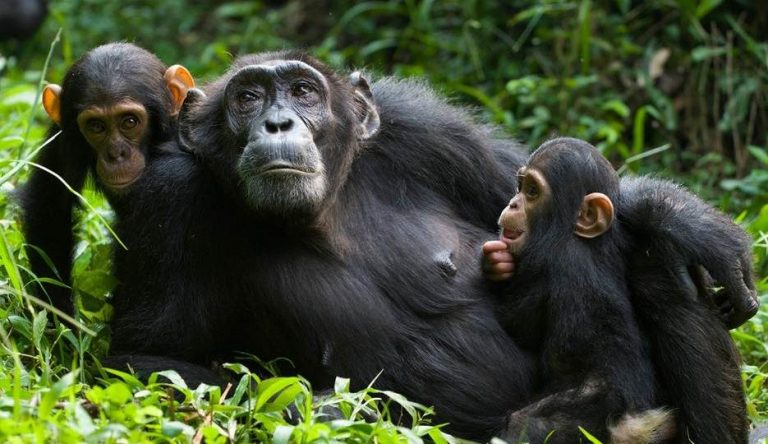
Kalinzu central forest is home to 6 primate species including chimpanzees, L’hoest monkeys, blue monkeys, olive baboons, velvet monkeys, and black and white colobus monkeys. You may spot all the six depending on the season and the knowledge of the tour guide. Better chances to see lots of monkeys are in Bigodi swamp, which is home to 8 of the 13 primates in Kibale forest national park.
Birds
Kalinzu is home to 378 bird species ranging from kingfishers, pigeons and doves, tits and honeyguides, hornbills, woodpeckers, cuckoo shrikes, bee-eaters and toucans, rollers, turacos, Estrildidae, weavers, to birds of prey such as vultures, and hawks.
This is due to the fact Kalinzu is part of Queen Elizabeth national park alone, which is an Important Bird Area and Ramsar site is famous for harboring over 600 birds including forest, savanna, wetland, and water bird species. As such, Kalinzu may be visited by both species that come from the surrounding crater lakes or Kazinga channel looking for shelter and food in the forest. Kalinzu, however, isn’t yet included in the areas of the park designated as IBAs.
The most common birds that you are likely to spot in Kalinzu forest include Klaas’s Cuckoo ( Chrysococcyx klaas), Woodland Kingfisher (Halcyon senegalensis), European Bee-eater (Merops apiaster), African Black-headed Oriole (Oriolus larvatus), Long-crested Eagle (Lophaetus occipitalis), Gray-throated Barbet (Gymnobucco bonapartei), Great Blue Turaco (Corythaeola cristata), African Crested-Flycatcher (Trochocercus cyanomelas), Golden-breasted Bunting (Emberiza flaviventris). The splendid, narrow-tailed, and purple headed starlings are also common. There are over 14 sunbird species recorded at Kalinzu forest including Bronze Sunbird (Nectarinia kilimensis), Collared Sunbird (Hedydipna collaris), Gray-headed Sunbird (Deleornis axillaris), Scarlet-chested Sunbird (Chalcomitra senegalensis), Little Green Sunbird (Anthreptes seimundi), Green-throated Sunbird (Chalcomitra rubescens).
Best time to visit Kalinzu forest
The best time to visit is between December to February and June to September, which is the dry season. The forest trails are drier making for ample conditions for hiking to see primates in Uganda including gorillas and golden monkeys in Mgahinga gorilla national park.
Tea estate tours
The Kyamuhunga and Igara Tea Estates in Bushenyi offer tours and tea tasting experiences. Both are easier to visit from Kalinzu to discover how tea is grown, harvested, processed and then produced. The tour includes visiting the onsite factory where the leaves are processed and the tasting room where you can discover the flavors of different Uganda tea grades.

